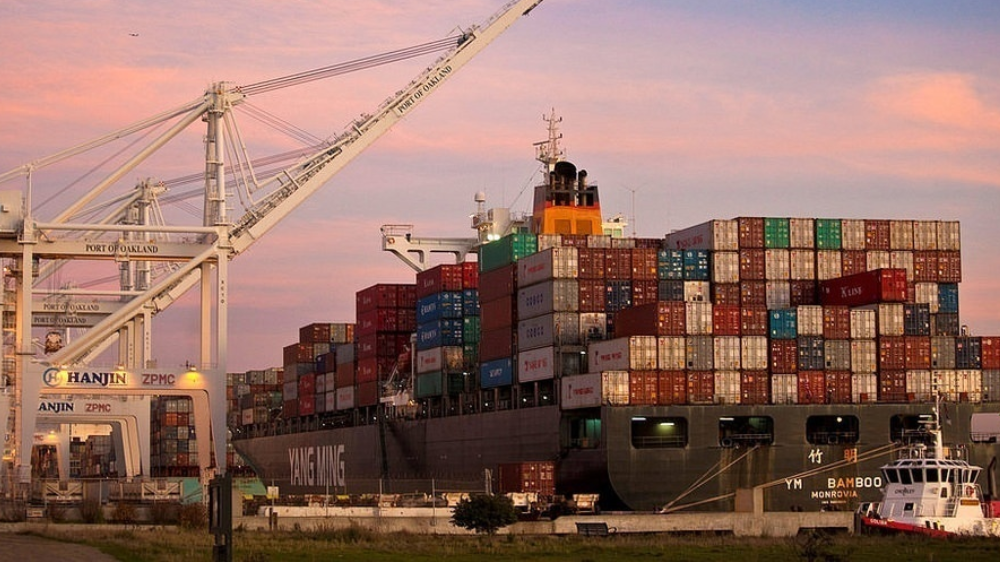Published 15 February 2019 | 4 minute read
Tariffs and a short-term trade deal involving purchases of U.S. commodities by China will not fix the underlying issues that have led to an escalation of China-US trade tensions.
This article was originally published in The Hill.
With the wind-down of the Beijing trade talks, we can anticipate a spate of potential announcements: reductions in American tariffs, resumption of China’s purchasing of U.S. commodities and a cooling of the growing trade war between the world’s two largest economies.
But is that what the West needs? And have we missed a critical moment to fix destructive trade policies dating back to China’s accession into the World Trade Organization (WTO)? These are policies that undermine not just the economy of the West, but our most fundamental democratic and social institutions.
I’d argue that the question we must ask ourselves isn’t whether the “tariffs worked.” President Trump’s tariffs on China “worked” insomuch as they got the attention of the Chinese. The real question is, “What next?” Because going back to business as usual is a mistake.
We must address China’s state-owned enterprises (SOEs), intellectual property theft, forced technology transfers and, ultimately, China’s currency policies — all structural issues that were not addressed at the time of the WTO’s decision to open the door to China.
It is worth examining how we got here in order to understand the depth of the problem for the United States and other Western market-based democracies.
It starts by accepting a fundamental truth: While the West thought we could induce political reform in China by giving them the opportunity to participate in the global economy, we have only weakened our own political and economic system.
Since China’s accession to WTO in 2001, the Chinese Communist Party has cemented its grip on power, turned previously-weak SOEs into global behemoths that dominate the world’s manufacturing system and grown its economy to twice the size that was anticipated under even the rosiest of scenarios produced by the World Bank.
There are two critical measures by which we can assess how China’s 2001 accession to WTO has undermined Western economies.
First, China’s entry into WTO ushered 750 million manufacturing workers paid 1/30th of their Western counterparts into the global labor marketplace. This put enormous deflationary pressure on wages in higher-cost economies, such as the United States.
Second, in response to the deflationary pressure of cheaper Chinese manufacturing, instead of seeking Chinese commitment to a floating exchange rate, the Federal Reserve and other central banks eased their own monetary policy to prevent an outright fall in overall price levels in the West.
So the burden of maintaining the 2-percent inflation — the basis of our monetary policy — fell on the “non-tradable” sector and services.
In other words, when Chinese-manufactured goods flooded the U.S. and pushed down the value of the “basket” of consumer goods with lower prices, the response was Fed monetary easing that had the effect of raising prices on things that could not be made in China but are critical to our way of life: housing, health care and education.
This leads me to ask: What’s the point of a cheap washing machine if you can’t afford a home to put it in?
Our effort to open China has produced a generation of Chinese multi-billionaires who will never forgo power there, just as it has produced a generation in the West who are economically disenfranchised, with lower incomes, crushing student debt and fading hopes of home ownership.
This is a generation that has less reason to defend a property-owning market economy, and indeed, there are multiple indicators of falling rates of participation in the key activities that matter to capitalist democracies.
How does that play into the administration’s trade plans for China? Tariffs don’t address this widespread disillusionment by a generation of young people left economically stranded.
And whatever framework emerges from the stand-off won’t address the structural problem of a Chinese Communist Party that holds the economic might of the globe’s top manufacturing power in its hands.
China’s political and human rights positions are antithetical to our Western values. Embracing China through the WTO has left the West economically weaker, with greater wealth disparity and a cohort of young citizens cast adrift from the solid shore of what capitalism should offer them.
Fixing our problems with China will require a long-term strategy, developed by the U.S. but with the support and collaboration of every other major Western economy. That strategy must force China’s hand through means other than the WTO, which was not set up to deal with China’s mercantilist trade approach.
When it comes to the current trade negotiations, the Chinese proverb of “crossing the river by feeling the stones,” may be apt. More apt may be the quote attributed to American legend Yogi Berra: “We’re lost, but we’re making good time.”
© The Hinrich Foundation. See our website Terms and conditions for our copyright and reprint policy. All statements of fact and the views, conclusions and recommendations expressed in this publication are the sole responsibility of the author(s).




